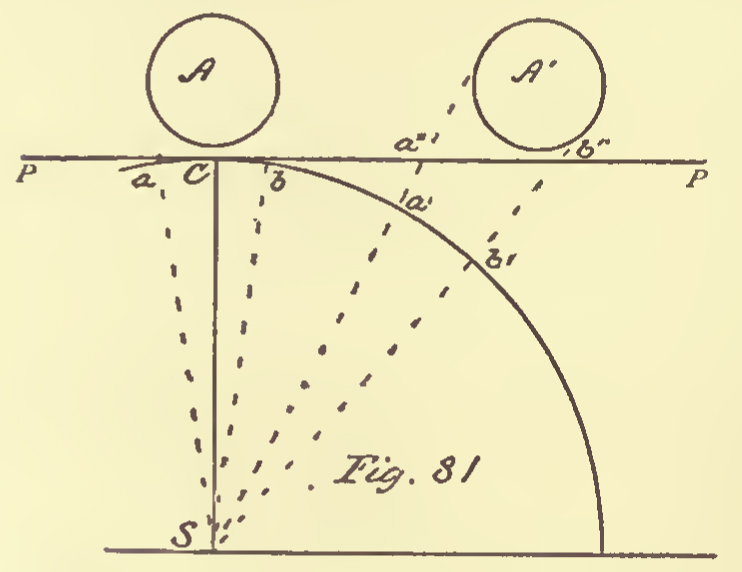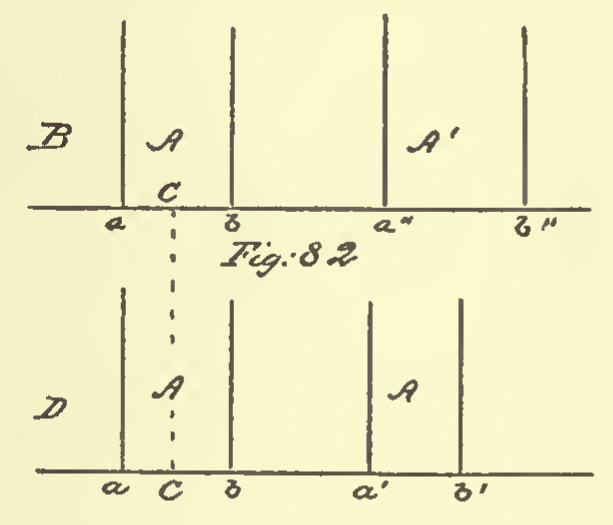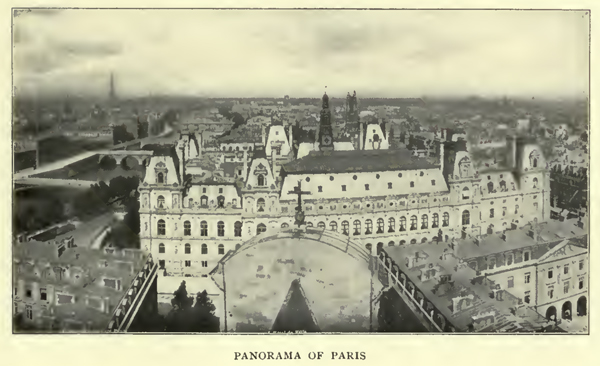Home > Directory of Drawing Lessons >Perspective Drawing > Guide to Drawing in Curvilinear Perspective
CURVILINEAR PERSPECTIVE DRAWING LESSONS : A Guide to drawing in curvilinear, cylindrical, panoramic perspective
|
|
How to Draw in Curvilinear PerspectiveIt is sometimes urged that in nature even straight lines look curved, tending as they do to meet their parallels in a vanishing point at each end. This is true provided they are long enough. We see it in the rays of light that stretch across the whole sky at sunrise or sunset. It is equally true of the lines of a perspective drawing. lf they are extended far enough, they too will look curved. But the vanishing points of a straight line are at opposite ends of the world, and cannot be put in the same plane-picture, nor can enough of any line to display the apparent curvature ordinarily be included in a drawing. If it were, the drawn line would also look curved. Yet the fact that as we turn the eye successively toward the opposite ends 'of a series of parallel lines, the cornices that border a long street for instance, we see them converge both ways, has led some men to insist that they should be drawn so in one and the same picture, and to devise ways of doing this. It is done as in panoramas, by projecting the view as on a vertical cylinder with the Station Point in its axis, which cylinder is unrolled into a flat picture.
In the plan, Fig. 81, the two equal circles A and A' representing towers or shafts of columns, are projected from the same Station Point S on the picture plane and on the cylindrical surface, the first in ab, which is practically the same on both surfaces, the second in a"b" on the plane and a'b' on the cylinder. The Centre C is here taken as the common tangent point of plane and cylinder, and it is clear that while the projection a"b" is larger than ab, or even than the width of the object A', being made obliquely on PP, a'b' is considerably less than the diameter of A' or even than ab, as would be the natural appearance, A' being farther than A from the eye at S. C may for comparison be taken for a Center on the cylindrical surface ab'1, but properly the Center may be anywhere on its horizon line, or nowhere, for any radius, being normal to the cylinder, may be called the Axis, and no point in its horizon line has different properties from any other. There being no Center, there are no Diagonals, and no distance points, and though there are vanishing points, for these are phenomena of vision, and not of the picture, the whole apparatus of measuring is done away with, and the picture must be constructed by conical projection in the manner described above as the natural system, the horizontal projections being taken from a plan, as in Fig. 81, and the heights from a side projection or elevation.
Plate XIX shows part of a panoramic view of Paris, photographed on a cylinder with a revolving camera, and then unrolled, so that it is in true cylindrical perspective. It will be seen that the only straight horizontal line in it is the Horizon Line. The lines of the principal building, the Hotel de Ville, which are really as straight as they can be built, are conspicuously curved in the picture, and those of the adjoining buildings,
which are parallel to them, are warped into a crescent. The main proportions of the building are preserved as they would not have been in a plane photograph, but at the cost of very unflattering distortion. If, however, the picture were rolled up into a
cylinder of the right diameter, and viewed from the axis of the cylinder at the height of the Horizon Line, the curves would straighten to the eye, and the distortion disappear. |
Privacy Policy ...... Contact Us








